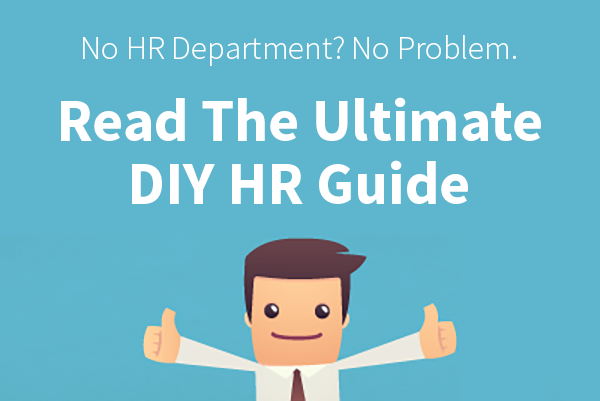What is Employee Retention Tax Credit (ERTC)?
Overview of Employee Retention Tax Credit
The Employee Retention Credit, also known as the Employee Retention Tax Credit, ERC, or ERTC, was designed to help businesses recover from the COVID-19 pandemic by reducing their employment taxes.
The overall goal of the program was to encourage employers to retain employees during pandemic-related business shutdowns and slowdowns.
First introduced in March 2020 as part of the Coronavirus Aid, Relief, and Economic Security (CARES) Act, the ERC has been updated twice since its original creation. Today’s version includes more businesses and offers a higher credit than originally announced. Information from when the program was first introduced may now be irrelevant, which can make it complicated for employers to determine if they qualify and understand the correct processes to receive the credit.
In November 2021, the ERTC program expired early with the signing of the Infrastructure Investment and Jobs Act. This change limits Employee Retention Credit claims to wages paid before October 1, 2021, except for recovery startup businesses. However, businesses can still retroactively claim ERC for up to three years by amending their 2020 or 2021 tax returns. That means employers can still claim the credit for actions during the pandemic on their tax returns up until the year 2024.
Even though the Employee Retention Credit is no longer in effect, small and medium-sized businesses can still see benefits by understanding the program and potentially amending their tax returns.
Fast, easy, and accurate payroll with BambooHR®.
Pay your U.S.-based employees on time, every time.
How Much Is the Employee Retention Tax Credit?
The Employee Retention Credit is a refundable tax credit of up to 70 percent of qualified wages paid by an eligible employer to employees between March 13, 2020, and September 30, 2021. The original program only considered 50 percent of wages earned until December 31, 2020, but it was later expanded to cover 70 percent of wages and include the first three quarters of 2021.
The credit applies to what the IRS calls qualified wages, including certain health insurance expenses, paid during any quarter of the period when business operations were suspended. If a business was forced to shut down or limit its hours because of COVID-19 restrictions or experienced a significant decrease in sales, it can get a tax credit for the wages it paid employees during that time.
Qualified wages are determined by a business’s number of employees. For businesses with an average of 100 or fewer full-time employees in 2019, qualified wages include the same wages and health care costs paid while business was suspended or sales declined, up to 10,000 dollars per employee annually for 2020. Employees did not need to be working during the shutdown to be counted as qualified wages, meaning they can include their entire payrolls. For example, a company with 25 people on payroll that was operating during the pandemic with three working employees can still claim the wages paid to all 25 employees.
For businesses that averaged more than 100 full-time employees in 2019, qualified wages are defined as wages paid to employees who weren’t working because of pandemic shutdowns or a decline in sales, up to 10,000 dollars per employee for 2020. For example, a company with 150 employees that only had 50 people furloughed but still on payroll during COVID-19 shutdowns can only claim the wages of those 50 people in its Employee Retention Credit.
The legislation in November 2021 increased the employee limit for qualified wages to 500 full-time employees, letting any qualifying employer with 500 or fewer full-time employees apply the wages of all employees when determining their credit. This is regardless of whether the employees actually worked during the pandemic. The wages must have been paid between March 13, 2020, and September 30, 2021. Companies that didn’t originally qualify can now adjust their credit by amending their tax returns.
As the ERC program was updated, the credit was expanded to 70 percent of qualified wages, up to 10,000 dollars per employee per quarter paid between January 1, 2021, and September 30, 2021. This means employers can claim up to 7,000 dollars per employee per quarter, for a total of up to 21,000 dollars in 2021.
Calculating the correct qualified wages can be confusing, but here is the basic breakdown:
- Companies with 500 or fewer employees can count everyone on the payroll (regardless of whether or not they worked during the pandemic) for up to 10,000 dollars in wages for all of 2020 and up to 10,000 dollars in wages per quarter for the first three quarters of 2021. The ERC covers 70 percent of eligible wages.
- Companies with more than 500 employees can count employees who worked while the business was shut down or limited for up to 10,000 dollars in wages for all of 2020 and up to 10,000 dollars in wages per quarter for the first three quarters of 2021. The ERC covers 70 percent of eligible wages.
For the most up-to-date information and advice, companies should consult with a payroll specialist or tax accountant.
Who Qualifies for the Employee Retention Credit
Businesses of all sizes and across all industries, including for-profit and tax-exempt organizations, qualify for the ERC if they experienced any of the following:
- Full or partial suspension of business operations in 2020 or 2021 because of COVID-19-related government restrictions on commerce, gatherings, or travel. Essential businesses or those that could keep their operations largely intact remotely don’t meet this qualification.
- A significant decline in gross receipts, meaning the employer’s gross receipts for the first calendar quarter of 2020 were less than 50 percent of its gross receipts for the same calendar quarter in 2019. This is the measure for businesses to qualify for ERC in 2020.
- A significant decline in gross receipts for a single quarter in 2021, meaning sales decreased by 20 percent from the same quarter in 2019. This is the measure for businesses to qualify for ERC in 2021.
Sole proprietors aren’t eligible to receive the ERTC for their own wages, but they can claim staff who aren’t related to them on their payrolls. Government entities also aren’t eligible for the credit.
Businesses that didn’t operate in 2019 can showcase a significant reduction in sales by comparing revenue between 2020 and 2021.
Originally, businesses that received other forms of COVID-19 relief weren’t eligible for the Employee Retention Credit. Most notably, this excluded businesses that received Paycheck Protection Program (PPP) loans, as well as wages the employer claimed for a tax credit for paid sick and family leave under the Families First Coronavirus Response Act.
However, in late 2020, Congress changed the ERTC to include employers who received PPP loans. But these businesses can’t claim the Employee Retention Credit for the same wages they counted for PPP forgiveness. Essentially, companies can only apply either the PPP or ERTC to the same payroll costs—they can’t apply both.
HR software so you can focus on the people, not the paperwork.
BambooHR automates operational tasks and frees HR to perform the big-picture projects that make a difference.
How Do I File for the Employee Retention Credit?
To receive the Employee Retention Credit, eligible employers report the total qualified wages and health insurance cost on their quarterly employment tax returns, typically using Form 941, starting with the second quarter of 2020 through the third quarter of 2021.
Employers are also eligible to retain the employment taxes they would otherwise have filed, including federal income tax withholding and Social Security and Medicare taxes, to total the amount of the credit. Companies don’t have to wait to receive a credit but can get immediate relief by reducing the employment taxes they initially pay.
Businesses can still file for the ERTC retroactively using Form 941-X, which adjusts employment taxes filed within the last three years. With the ERTC’s extension, companies can still claim the credit retroactively through 2024, but the credit only applies to wages from the 2020 tax year afnd the first three quarters of the 2021 tax year. Once businesses have claimed the tax credit for all applicable quarters, they can no longer apply for the ERC.
Is the Employee Retention Credit a Loan?
The Employee Retention Credit isn’t a loan, so it doesn’t need to be repaid. It is simply a grant or credit to lower businesses’ employment taxes. As long as the credit is calculated and filed correctly, companies don’t have to pay it back or pay any other penalties, unlike some other forms of small business pandemic relief that are expected to be paid back, such as PPP loans.
Although companies can still file retroactively to take advantage of the Employee Retention Tax Credit, the process and qualifications can be complex. For best results and personalized recommendations, companies should discuss the ERC with their accountants and payroll specialists to ensure the credit is properly filed.

Pay transparency is more than publishing every employee’s salary. Learn the different stages of pay transparency and how you can implement them to increase productivity and performance.

Too many small business leaders handle HR duties all by themselves (or don't both with it at all). For those DIY business leaders, we’ve created a DIY guide to master HR best practices.